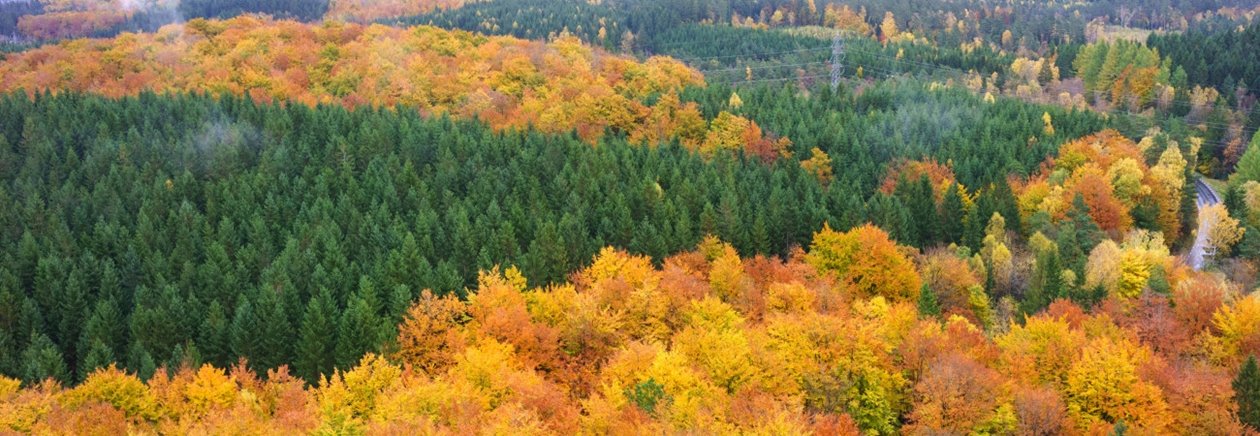A year in the life of our forests

We continue to bring you a snapshot of life in a typical forest estate owned by one of about 50,000 members. Jonas Larsson is our guide through the year. Managing Director of Södra Cell GmbH and Senior Advisor Forestry, he has been a Södra member for eight years with a plot of 20 hectares, just under half the size of an average Södra forest estate. His wife Marie previously owned a Södra forest that was in the family for four generations, now managed by her brother.
October
The autumn is a time to review. We check the growth and progress of seedlings planted earlier in the year and the areas we’ve regenerated. A few lost seedlings here and there are to be expected, but if there are sizeable patches where seedlings and saplings are not thriving, we make a note to replant in the Spring. It’s important not to wait as adjacent saplings will carry on growing, and smaller plants won’t catch up if planted in the shade of much bigger neighbours.
Areas where we have conducted pre-commercial thinnings are also reviewed to check we have achieved the right density for the young trees we left standing. The idea is to monitor constantly, to ensure that we are creating the right conditions for the forest to thrive. This will mean a further thinning in three, five or eight years, depending on how the trees are doing, and sending the wood to our pulp mills.
Whenever I’m in my forest, I’m aware of its biodiversity, but at this time of year, I make a special effort to monitor the birds which are a particular interest of mine. As broadleaf trees grow in size and age, their function changes, attracting foragers such as woodpeckers, nuthatches, blue jays and thrushes who come to feast on the berries and nuts. This is one of the reasons it’s so important to be guided by legislation and forest certification systems: To ensure we balance economics with biodiversity, we are careful to leave enough mature trees untouched.
On my own estate, around half of the mature broadleaved trees left standing by the previous owner have now reached the end of their natural life and fallen to the ground. It’s important to leave them on the forest floor rather than take them for the wood burner, however. No longer a home for woodpeckers, dead wood becomes an important site for fungi, lichen and insects. It’s all part of the lifecycle of the forest.

Head of Business Support & Senior Advisor ForestryPhone: +46 70 518 93 63jo......@sodra.com
Show all content for topic
Subjects: Pulp
